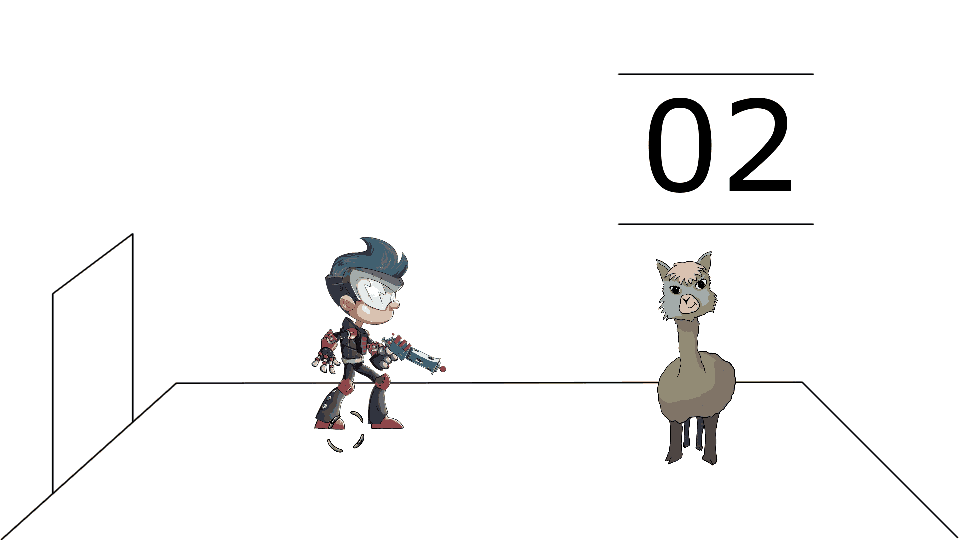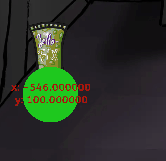Getting started with your first ALPACA game
If you want to use ALPACA, you have two different options:
- You can use ALPACA for game development without compiling C++ code, just using Lua scripting and the Spine editor (Windows only).
- You can set up ALPACA for engine development, where you compile the engine (C++ code) yourself and are able to make changes to the core functionality of ALPACA (this is required on Mac and Linux, but also possible on Windows).
Setting up your PC for game development (Windows)
This is the easiest way to work with ALPACA. You don't have to deal with C++ compilers and use a precompiled version of ALPACA. Unfortunately this only works on Windows.
- Get ALPACA for Windows.
- Install Spine into the default folder.
- Run
prepare_assets.exeto synchronize your changes in the data-src folder with the data folder. - Run
pac.exeto start the game. - In the Schnack folder you will find the dialog editor.
- For Lua scripting it's recommended to use VS Code with a Lua extension like Lua.
- Take a look at what's in the demo and build your own game.
- If you need help setting up your first project or want to talk about your game. Book a time slot with the ALPACA developers at calendly 🇩🇪🇬🇧, mail me at kolja@portaldogs.com 🇩🇪🇬🇧 or join ALPACA on Discord.
Setting up your PC for engine development (Windows / Mac / Linux)
This is the advanced way of working with ALPACA. You compile the engine yourself. This also allows you to make changes to the engine core if you feel this is necessary for your use case.
- Clone the ALPACA repository with git via
git clone --recurse https://github.com/pinguin999/ALPACA.gitor clone it with the GutHub desktop client. - Set up your Mac or Linux for JNGL development. Or Windows development
- You should now be able to play the demo project.
- Check that you have Spine, Rhubarb, Lua and Python installed. Now you can re-export all the assets from data-src to data using the prepare_assets.py script. On Windows you will need to have Spine installed and you can use prepare_assets.exe to export the assets.
- If you need help setting up your first project or want to talk about your game. Book a time slot with the ALPACA developers at calendly 🇩🇪🇬🇧, mail me at kolja@portaldogs.com 🇩🇪🇬🇧 or join ALPACA on Discord
What's in the demo game?
The demo has two scenes. In the first scene there is a banana that has a funny effect when you click on it.
 In the second scene there is an alpaca, so you have something to experiment with. If you click on the alpaca's head, it'll talk to you.
In the second scene there is an alpaca, so you have something to experiment with. If you click on the alpaca's head, it'll talk to you.

What you can learn from the demo
The demo is a good place to start a new project. It already has a working setup and some good defaults set up for you. You can also start with an empty data-src folder, but for a smooth start it's recommended to start from the demo game.
You can play with the project and learn from it. Here are some tasks you can try yourself.
All the game content is in the data-src folder and the prepare_assets converts it and puts it in the data folder. So never change any files in the data folder. It should always be safe to delete the data folder and prepare_assets will recreate everything from data-src.
Adding a Spine object
All objects in an ALPACA game are Spine projects. To add a new object to a scene you need to start a new Spine project.
- Create a folder in
data-srcwith the name of your object. Let's call itdog - Open Spine and click
New Project - Give the skeleton the same name as your folder. In our case it's
dogagain - Add images to your spine file and create some nice animations.
- Save the Spine file to
data-src/dog/dog.spine - The
prepare_assetsscript should already be running, if not, run it. Check the output for...dog.spine has been modified - Now open
data-src/scenes/test_chamber_one.jsonin VS Code and add the dog item to theitemslist. - The scene should now reload and show the dog.
{
"items": [
{
"spine": "banana",
"x": "330.0",
"y": "400.0",
"scale": "0.3",
"skin": "normal"
},
{
"spine": "dog",
"x": "0.0",
"y": "0.0"
}
],
...
}
Find out more about scene objects and Spine
Moving an object
The dog object you have just created will be placed in the center of the screen.
- In the game, open edit mode by pressing Tab
- A green circle will appear under the dog

- Drag and drop the dog where you want it.
- Press S to save.
Playing with the scripts
Interactable regions are defined by a bounding box in Spine.
- Select a
bonein Spine and selectBounding Boxfrom the new drop down menu. - Give the box a descriptive name. The name should represent the action. Let's name it
bark - The prepare_assets script will automatically create a file called
bark.luafor you. This file will contain the following line
print("bark")
- The dog will be automatically reloaded, the clickable area can be clicked.
- If you are not sure where the area is, you can visualise it by pressing F10.
- After clicking on the area, the debug console will display the text
bark. - If your dog has a bark animation, you can start the animation through the script by calling the PlayAnimation function.
print("bark")
PlayAnimation(0, "bark", false)
Now you are ready to start scripting in Lua, the way logic is defined in an ALPACA game. A full list of functions can be found in the Lua API documentation. For the quick intro you want the player to go to the item and interact with it. To be able to go anywhere you need to define a Point in Spine, so let's add the point to our item and save it. I named the point "game center" in the example and will use this name in the script of this tutorial.
Most Lua functions like GoToPoint have two versions: GoToPoint and GoToPointOn.
The GoToPoint is applied to the object calling the function.
The On version like GoToPointOn allows you to specify another object as the target.
The following example is called from the banana object, so we can use the
GoToPoint("center") instead of the longer version of GoToPointOn("banana", "center").
print("banana_clicked")
GoToPoint("center", function ()
PlayAnimationOn("Player", 0, "death", false, function respawn()
print("respawn")
PlayAnimationOn("Player", 0, "idle", true)
end)
end)
A complete overview of all Lua functions can be found in the Lua documentation.
Dialog editing and audio playback
ALPACA comes with the Schnack node based dialog editor. The Alpaca in the demo has one dialog. You can start Schnack and open the dialog file from data-src/dialog/dialogs.schnack
Changing the game config file
First you should have a look at the file data-src/config/game.json. There you can change all important basic parameters like the game name and the start_scene.
Adding a new scene
Everything in an ALPACA project is organized into scenes. A scene consists of a background, some items placed in the scene and music that is played in the background. Let's have a look into the scenes folder. There are two example scenes. Let's copy one of the example scene files and rename it to whatever you set start_scene to in game.json. If you don't need the test_chambers it's safe to delete them.
In ALPACA everything you see on the screen is a Spine project, so for the scene background you need to create a Spine project. Open Spine, click on New Project and name the skeleton your scene name. The background will be drawn from the center, so the Spine 0,0 point should be in the center of the screen. If you want the player to be able to walk around the scene, you need a bounding box called walkable_area. For reference you can look at data-src/scene1/scene1.spine. After saving our scene background you should update the background entry in our scene file. If it's not already running, you should run prepare_assets.py to get the exported files into the data folder. If you start your game now, you should see your new scene.